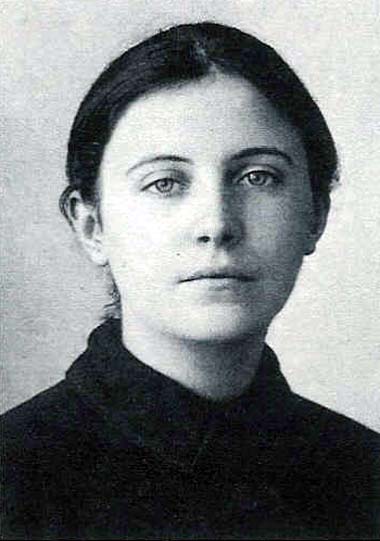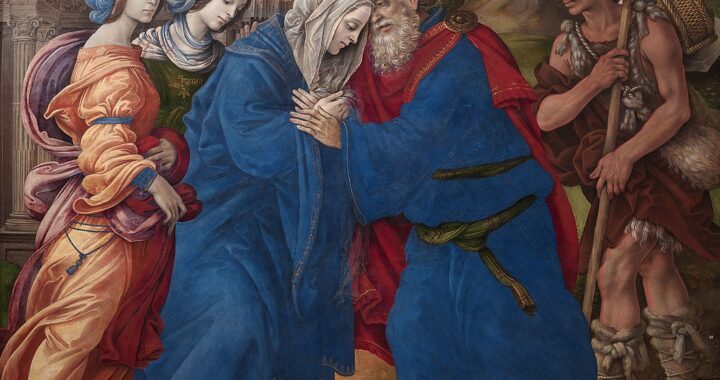
One of the most famous mystics in the history of the Church—Saint Catherine of Siena—is celebrated in the month of April. But there are three other canonized saints of April who have a great deal in common with the famous Saint Catherine (1347-1380).
All three of these overlooked saints died relatively young. All three were women who chose to remain virgins and to consecrate their lives to Christ. All three inspired many other Catholics during their lifetimes. And all three were mystics.
What does it mean to say that someone is a mystic? While the secular world may define a mystic in terms of esoteric or occult practices, Catholics prefer to use the term with respect to its root meaning, “a teacher of mysteries”. The mysteries in question are not Agatha Christie-style mysteries or magic-show mysteries, but mysteries of the Christian faith. The mysteries taught by Catholic mystics are the ones that a person can only learn by drawing so close to God that He reveals Himself in powerful and amazing ways.

The woman now known as Saint Teresa of Los Andes (1900-1920) was given a long name at her birth—typical for a girl born into an upper class family in Santiago, Chile—Juana Enriqueta Josephina de Los Sagrados Corazones Fernández Solar. She was a devout girl and made serious efforts to grow in virtue even when she was young. On the other hand, she could be as stubborn and bad-tempered as any other typical child, and she enjoyed swimming, playing tennis, singing, and dancing.
At the age of nineteen, she entered the novitiate of a Carmelite convent in Los Andes. A little less than a year later, she had died of typhus.
But Teresa spent that short year of her life influencing others just as Saint Catherine of Siena had done. That is, she wrote letters. Teresa’s spiritual letters offered advice and encouragement to family and friends. She also shared her mystical experiences and deep devotion in her diary, a devotion so personal that she wrote that she could hear Mary’s voice speaking to her. Because her example and writings influenced others long after her death, she was eventually canonized and is celebrated on the date of her death, April 12.

Most Catholics have heard of Saint Bernadette Soubirous (1844-1879), the girl who received multiple visions of our Blessed Mother at a grotto in Massabielle, France. Born into poverty and suffering from poor health all her life, the visions of Our Lady of Lourdes made Bernadette famous, although she tried to avoid attention as much as possible.
The Sisters of Notre Dame of Nevers accepted young Bernadette into the order when she was twenty-two years old. Some allege the sisters accepted her primarily to protect her from endless pestering from the faithful about her visions, and they only allowed her to take her religious vows because it was thought she was near death.
But Bernadette was more than just a person who received visions of our Blessed Mother. Like Saint Catherine of Siena, Bernadette’s words had worldwide impact. Her humble retelling of her unexpected visions led to a greater devotion to Mary, a world-famous center for healing, and seventy medically-inexplicable healing miracles. At the same time, Bernadette was a simple young woman who patiently bore endless questioning from both those who adored her and those who vilified her, along with illness and pain. She suffered from chronic asthma from the time she was a child, and it was the asthma, along with tuberculosis of the bones and lungs, that ultimately caused her premature death. Her incorrupt body can be found in the convent in Nevers where she died on April 16, 1879.

The life story of Saint Gemma Galgani (1878-1903) may sound like a novel, but it is a true story.
Gemma was born in Lucca, Italy, and was one of eight children. Her mother died when she was seven years old, her father died when she was nineteen, and some of her siblings died young as well. Although she wanted to enter the Passionist order, she recognized that her continual poor health made that impossible and instead tried to model her life around Passionist spirituality. Gemma was a beautiful young woman, and she received proposals of marriage after her father’s death. But she instead chose to stay and care for her three younger siblings with the help of an aunt and work as a housekeeper.
As is obvious from her diary, Gemma was a woman of great faith in God. She was diagnosed with spinal meningitis when she was sixteen years old and was expected to die, but she inexplicably recovered. She attributed that miracle to the Sacred Heart of Jesus and to the intercession of two saints, Saint Gabriel of Our Lady of Sorrows (who died in Lucca) and Saint Margaret Mary Alacoque.
Like Saint Catherine of Siena, Gemma received the stigmata. She was seen to levitate and go into ecstasies while she was praying. She was both respected and mocked by citizens of her city for her piety. Gemma eventually contracted tuberculosis and died on April 11, during Holy Week.
These three devout young women show us that understanding and teaching others about the mysteries of God are not tasks restricted to theology professors. They demonstrate that people of all ages can face physical and emotional suffering with trust in God. And they remind us that mystical gifts come at a price: the price of wholehearted dedication to prayer.
For all these reasons, these overlooked mystics can be as inspirational to us in the twenty-first century as Saint Catherine was in the fourteenth. We can turn to their example of struggling with our weaknesses, patiently accepting our daily crosses, and making prayer a priority in our lives. And we too can hope to become mystics who love God so deeply that His Spirit spills into the lives of those around us.
